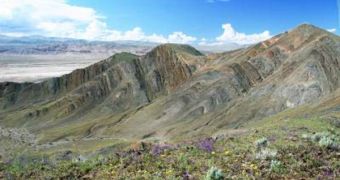Since our planet was first created some 4.5 billion years ago, numerous things had to fall in place for life to appear. And when it did, it apparently not only spread, but broke out with incredible power and energy. Of course, there were hitches along the road, some of them major (five clearly established extinction events), some smaller (prolonged eruptions, ice ages), and life almost didn't make it at times, but evolution could not be stopped. Now, researchers have managed to identify the moment when it all started, as well as the main factor that allowed for life to blossom on our world.
Roughly 540 million years ago, researchers determined that life in its multicellular form simply broke over all barriers, and spread around the planet, setting the basis for the emergence of more complex species, such as fish, which eventually led to the appearance of land mammals, dinosaurs, and, finally, early humans. While scientists have known this for a while, the trigger behind this “outburst” was a matter of speculation until recently, when Geologist L. Paul Knauth of the Arizona State University came up with a possible answer.
According to the expert, primitive ground huggers, as in non-vascular plants, were the organisms responsible for allowing life to spread from one end of the Vendian supercontinent to the other. “An explosive and previously unrecognized greening of the Earth occurred toward the end of the Precambrian and was an important trigger for the Cambrian explosion of life,” the expert explains.
“During this period, Earth became extensively occupied by photosynthesizing organisms. The greening was a key element in transforming the Precambrian world – which featured low oxygen levels and simple, bacteria dominant life forms – into the kind of world we have today with abundant oxygen and higher forms of plant and animal life,” he adds.
“There are three atoms of oxygen for every atom of carbon in limestone. We looked at the oxygen isotopes as well, which allowed us to see that the peculiar carbon isotope signature previously interpreted in terms of catastrophes was always associated with intrusions of coastal ground waters during the burial transformation of initial limestone muds into rock. It's the same as we see in limestones forming today,” he shares, having just completed a study of Neoproterozoic limestones. He conducted that research in order to prove that his theories were correct.
“Our work presents a simple, alternative view of the thousands of carbon isotope measurements that had been taken as evidence of geochemical catastrophes in the ocean. It requires that there was an explosive greening of Earth's land surfaces with pioneer vegetation several hundred million years prior to the evolution of vascular plants, but it explains how a massive increase in Earth's oxygen could happen, which has been long postulated as necessary for animals to evolve big time. The isotopes are screaming that this happened in the Neoproterozoic,” he concludes.

 14 DAY TRIAL //
14 DAY TRIAL //